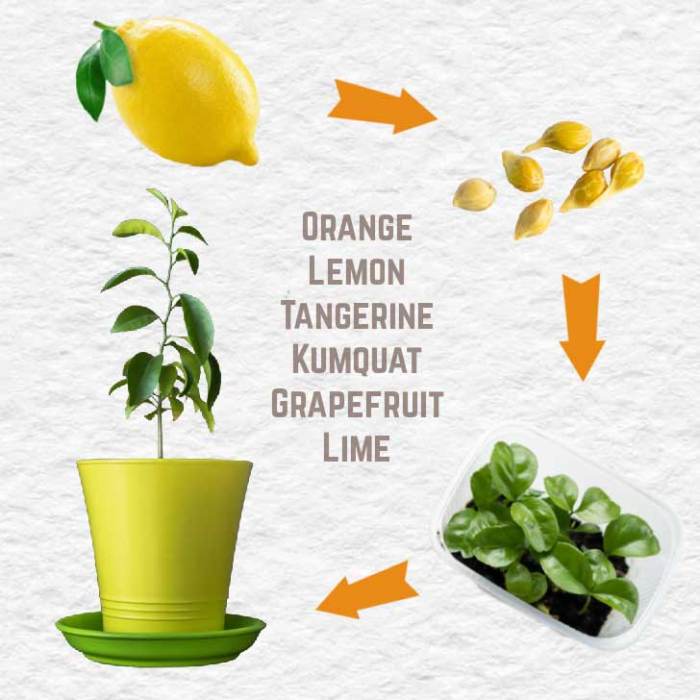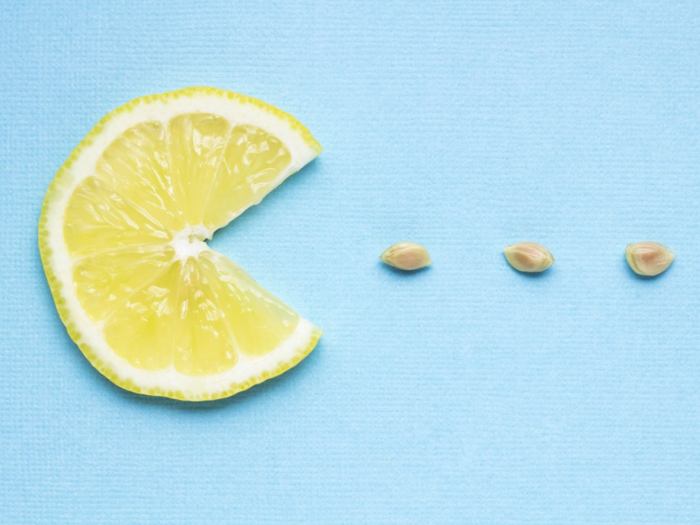How to Start a Lemon Plant from Seed
Lemon Seed Germination and Cultivation: How To Start A Lemon Plant From Seed
How to start a lemon plant from seed – Growing a lemon tree from seed is a rewarding, albeit lengthy, process. While it may not produce fruit identical to the parent plant, it offers a unique opportunity to cultivate your own citrus tree. This guide provides a comprehensive approach, covering seed selection, planting, care, and troubleshooting.
Seed Selection and Preparation
Choosing viable seeds and preparing them correctly significantly impacts germination success. The ideal lemon seeds are plump, firm, and free from blemishes or discoloration. Seeds from ripe, healthy lemons generally offer the best chances of germination.
Cleaning and preparation involves removing any surrounding pulp or membranes. Gentle rinsing with water is recommended. Scarification, a technique to weaken the seed coat, can enhance germination. This can be achieved by carefully nicking the seed coat with a sharp knife or using sandpaper, being careful not to damage the embryo. While not mandatory, it’s beneficial.
Seed viability testing, while not always necessary for a small batch, involves soaking seeds in water for a day; seeds that sink are generally more viable than those that float.
Starting Seeds Indoors
Selecting the right potting mix is crucial for successful germination. A well-draining, nutrient-rich mix is essential to prevent rot and provide adequate nutrients for seedling development.
| Potting Mix | Pros | Cons | Suitability for Lemon Seeds |
|---|---|---|---|
| Seed Starting Mix | Lightweight, good drainage, sterile | May require supplemental fertilization | Excellent |
| Coco Coir | Water-retentive, sustainable | Requires careful watering to avoid oversaturation | Good, requires amendment with perlite |
| Potting Soil (with perlite) | Readily available, generally affordable | Can be denser, potentially leading to poor drainage if not amended | Fair, amend with perlite for better drainage |
| Vermiculite | Excellent drainage and aeration | Provides minimal nutrients, requires fertilization | Good, use as a component in a mix |
Sowing involves planting seeds about 1/4 inch deep in seed trays or small pots filled with the chosen potting mix. Maintain consistent moisture, but avoid overwatering. Optimal germination occurs at temperatures between 70-80°F (21-27°C), with high humidity (around 70%), and bright, indirect light. A humidity dome or plastic bag can help maintain humidity. Regularly mist the soil to prevent it from drying out.
Germination and Seedling Care
Lemon seeds typically germinate within 2-8 weeks, though it can vary depending on seed viability and environmental conditions. Healthy seedlings display vibrant green cotyledons (seed leaves) and develop a strong taproot. Unhealthy seedlings may appear weak, pale, or exhibit signs of rot. Once seedlings have developed their first true leaves, they should be carefully transplanted into individual containers to allow for adequate root development.
Hardening off is a crucial step before transplanting outdoors. Gradually acclimate seedlings to outdoor conditions over a period of several weeks, increasing their exposure to sunlight and wind daily to avoid shock.
Transplanting and Outdoor Care

Source: empressofdirt.net
Transplanting lemon seedlings into larger pots or directly into the ground should be done carefully, avoiding root disturbance. Lemon trees thrive in well-drained, slightly acidic soil (pH 6.0-7.0) with ample sunlight (at least 6 hours per day). A sheltered location, protected from strong winds, is ideal. Regular watering, fertilization (using a citrus-specific fertilizer), and pruning are essential for healthy growth.
A schedule should be developed based on the plant’s needs and the climate. Young plants should be monitored for pests and diseases; timely intervention is crucial.
Addressing Common Problems

Source: gardeningknowhow.com
Several challenges can arise when growing lemon plants from seed. Early identification and appropriate solutions are vital for successful cultivation.
- Root rot: Overwatering, poorly draining soil; ensure proper drainage and adjust watering frequency.
- Yellowing leaves: Nutrient deficiencies, overwatering, or pests; diagnose the cause and provide appropriate remedies (fertilization, pest control).
- Stunted growth: Nutrient deficiencies, inadequate light, or rootbound conditions; amend soil, increase light exposure, or repot.
- Pests: Aphids, scale, spider mites; use appropriate insecticides or organic pest control methods.
- Diseases: Citrus canker, citrus greening; preventative measures and prompt treatment with fungicides or bactericides if necessary.
Visual Guide: Seedling Development Stages
Observing the visual characteristics of lemon seedlings at different stages helps monitor their health and development. The germination stage is marked by the emergence of the radicle (root) followed by the cotyledons. The cotyledon stage shows the two seed leaves providing initial nourishment. The first true leaves are distinct from the cotyledons, indicating the seedling is transitioning to independent growth.
Subsequent stages involve the development of more leaves, branches, and ultimately, flowers and fruit (after several years).
Comparison of Different Lemon Varieties, How to start a lemon plant from seed

Source: hometipsworld.com
Various lemon varieties offer unique characteristics in terms of growth habit, fruit size, and cold hardiness. Choosing a variety suitable for your climate is crucial for success.
| Lemon Variety | Growth Habit | Fruit Size | Cold Hardiness |
|---|---|---|---|
| Eureka Lemon | Vigorous, upright | Medium | Moderate |
| Lisbon Lemon | Compact, spreading | Medium | Moderate |
| Meyer Lemon | Smaller, more compact | Small to medium | Lower |
| Bearss Lemon | Vigorous, large | Large | Moderate |
FAQ Compilation
How long does it take for a lemon seed to germinate?
Germination time varies, but typically takes several weeks to a few months. Factors like seed quality and environmental conditions play a significant role.
Can I use store-bought lemons seeds?
While possible, store-bought lemon seeds often have a lower germination rate due to processing. Consider sourcing seeds from fresh, organically grown lemons for better results.
What should I do if my lemon seedlings look leggy?
Leggy seedlings indicate insufficient light. Increase light exposure, either by moving them closer to a light source or using grow lights.
My lemon plant has yellowing leaves. What could be the cause?
Yellowing leaves can be caused by several factors, including overwatering, underwatering, nutrient deficiencies, or disease. Investigate the other conditions to determine the cause.




















